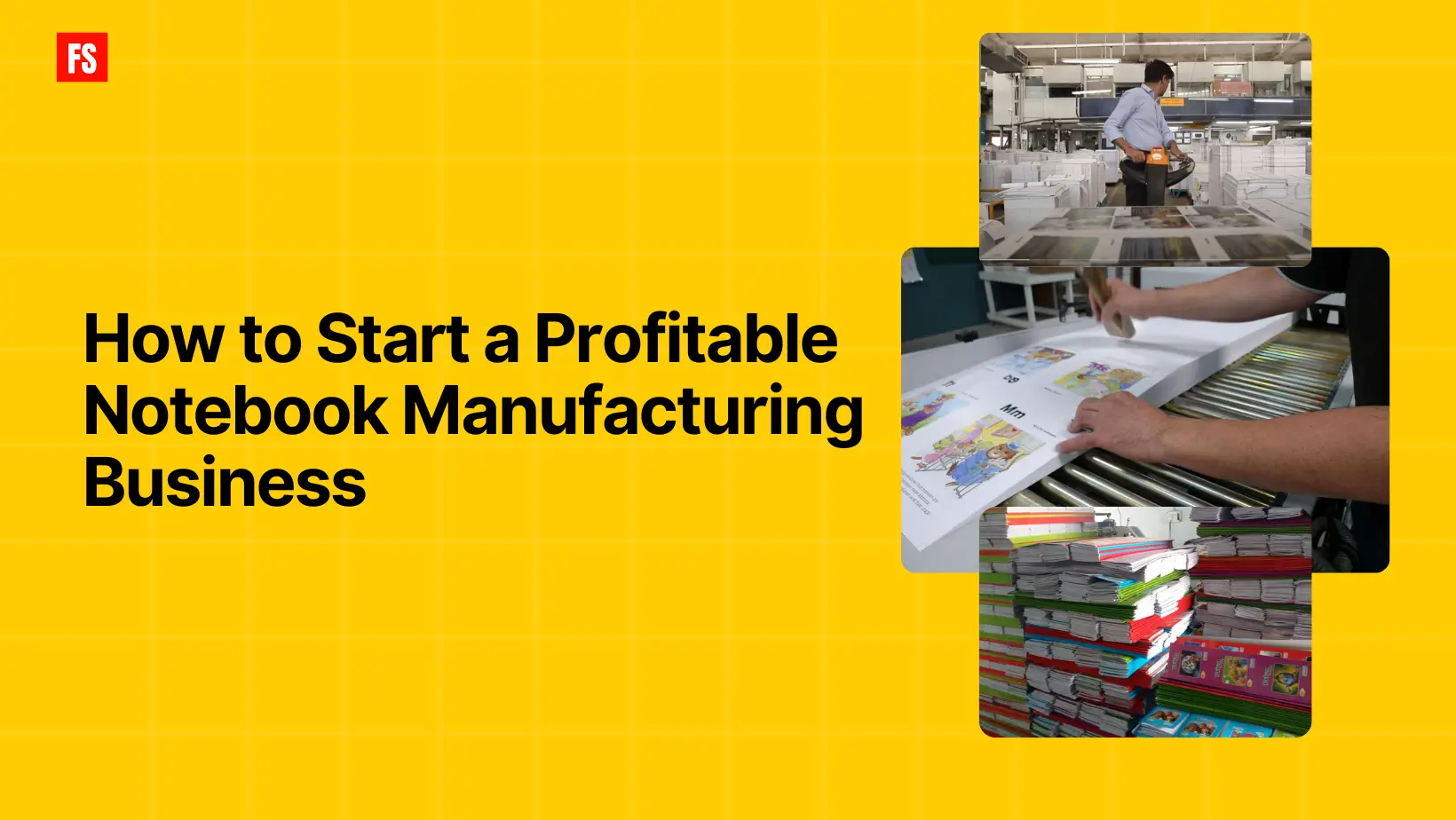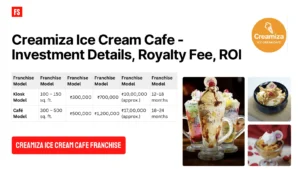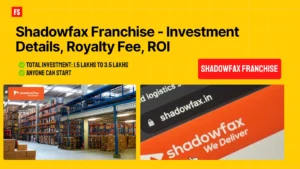In a world that’s constantly shifting toward digital, you might think notebooks are obsolete. Yet, the global demand for notebooks continues to thrive especially in education, office use, and customized gifting. If you’re looking to start a small to medium-scale manufacturing business in 2025, notebook manufacturing could be your profitable gateway. This guide explores how to start a profitable notebook manufacturing business in 2025 from planning to production, branding, and beyond.
Understanding the Notebook Manufacturing Industry in 2025
Despite the rise of digital devices, notebooks remain indispensable. With growing literacy rates, the rise of hybrid education models, and the ongoing demand for branded and customized stationery, notebook usage is on the upswing globally.
In 2025, the notebook manufacturing industry is experiencing growth thanks to:
- A resurgence in eco-conscious consumers choosing paper over screens.
- Custom stationery trends on platforms like Etsy and Amazon.
- High-volume demand from schools, colleges, corporates, and institutions.
According to IMARC, the global paper notebook market is expected to continue growing at a CAGR of 5.6% between 2023 and 2028.
Also Read this: Top 5 Cities in India by GDP (2025)
Crafting a Business Plan for Your Notebook Manufacturing Venture
Before purchasing machinery or scouting a facility, a robust business plan is key. Your notebook manufacturing business plan should cover:
1. Target Market
Decide if you’re catering to:
- Institutional buyers (schools/offices),
- Retail markets,
- E-commerce customized orders,
- Export markets.
2. Product Offerings
Choose from:
- Spiral-bound notebooks
- Hardbound journals
- Eco-friendly notebooks
- Customized diaries
3. Capital Investment & Budget
Estimate:
- Land/building rent: $5,000–$10,000/month (depends on location)
- Machinery: $15,000–$40,000
- Raw materials (paper, covers, ink): $5,000–$10,000
- Labor: $2,000–$5,000/month
- Marketing & branding: $2,000 initially
4. Revenue Goals & Profit Margins
The typical profit margin in notebook manufacturing ranges from 15% to 30%, depending on quality, pricing, and scale.
Legal and Regulatory Considerations
To run your notebook manufacturing business legally in 2025:
- Business Registration: Choose the structure (sole proprietorship, LLP, or Pvt. Ltd.).
- GST Registration (India) or relevant tax compliance in your country.
- Factory License: If you’re employing laborers and operating machinery.
- Environmental Compliance: For paper waste, emissions, and water usage.
- Trademarking your brand and logo (especially for customized notebooks).
Setting Up Your Manufacturing Facility
1. Location
Select a site that’s affordable yet close to:
- Transport hubs (for distribution),
- Supplier zones,
- Your target customers (urban buyers or export markets).
2. Facility Layout
Divide your space into:
- Paper cutting area
- Printing station
- Binding and stitching section
- Quality control unit
- Packaging and storage
3. Machinery Required
Here are some machines typically needed:
- Paper Cutting Machine
- Ruling Machine
- Offset Printing Machine
- Binding/Pinning Machine
- Pressing and Packaging Machines
4. Hiring Labor
Hire skilled workers for:
- Printing operations
- Bookbinding
- Quality checks
- Supervisory and machine maintenance roles
Training them on SOPs and quality benchmarks is crucial.
Sourcing Raw Materials and Supplies
Reliable sourcing is the backbone of profitability.
Raw Materials:
- Paper (70–100 GSM for inner pages)
- Cover Materials (laminated cardboards or recycled materials)
- Binding Pins, Spiral Coils, and Threads
- Ink and Packaging Materials
Tips:
- Partner with bulk suppliers for discounts.
- Always ask for samples before finalizing.
- Explore eco-friendly paper or recycled options for branding advantage.
Also Read this: 10+ Profitable B2B Manufacturing Business Ideas 2025
Production Process and Quality Control
The typical manufacturing process includes:
- Paper Cutting – Sheets are cut to standard sizes (A4, A5, etc.).
- Ruling/Printing – Use ruling machines or offset printers for lines/grids.
- Cover Design Printing – Print brand logos and designs.
- Binding – Pages are gathered, stitched/pinned/spiral bound.
- Pressing – For smooth finish and binding strength.
- Trimming and Packaging – For neatness and protection.
Quality Control is crucial at each step:
- Check alignment and page count.
- Inspect binding durability.
- Test ink for smudging or fading.
- Ensure uniform print quality.
Branding and Marketing Strategies
A profitable notebook manufacturing business in 2025 needs more than quality—it needs visibility.
1. Brand Identity
Create a unique logo, color palette, and voice. Decide if you’ll go with:
- A professional feel for offices,
- A youthful design for students,
- An eco-conscious theme for green brands.
2. Online Presence
- Build a basic website with product photos and contact forms.
- Use SEO strategies to rank for “custom notebook suppliers” or “buy school notebooks wholesale”.
- Start Instagram and Pinterest pages for design-centric appeal.
3. Sales Strategy
- Cold-email or meet school procurement officers.
- List your notebooks on Amazon, Flipkart, Etsy.
- Run ads during the school season (June, September, January).
Distribution and Sales Channels
A well-structured sales and distribution network boosts profits:
- Direct B2B Sales: Reach schools, universities, and corporates.
- Retail Chains: Pitch to local stationery stores and bookshops.
- Online E-commerce: Sell via Amazon, Flipkart, your own site.
- Export: Explore demand from Africa, Middle East, and South Asia.
You can also partner with delivery and logistics firms for cost-effective shipping.
Financial Management and Profitability Analysis
Your financial health hinges on:
- Managing Raw Material Costs: Negotiate long-term rates.
- Reducing Waste: Use automation and train labor well.
- Pricing: Use tiered pricing (bulk discounts for institutions).
- Recurring Orders: Offer school-year or festival combo deals.
Use basic accounting tools like Zoho Books or QuickBooks to track profit/loss.
Scaling and Diversifying Your Business
Once your notebook business stabilizes, consider scaling:
- Add new SKUs: Journals, daily planners, student kits.
- Offer custom branding for companies and events.
- Launch subscription boxes (e.g., “Back to School” bundles).
- Get into spiral and leather notebooks for premium buyers.
Conclusion
Starting a notebook manufacturing business in 2025 is a lucrative opportunity for entrepreneurs with a keen eye for detail, creativity, and quality. With the right planning, sourcing, and branding, you can tap into educational, corporate, and gifting markets—ensuring your notebooks not only fill pages but also profits.
PS: Please help me improve my content, share your feedback by clicking any of the emojis below 👇
FAQs: Starting a Notebook Manufacturing Business
A small-scale unit may need $15,000–$30,000 initially, depending on equipment and capacity.
Margins can range from 15% to 30%, based on your scale, raw material costs, and market pricing.
Yes, peak seasons are typically around school reopenings (April–July and November–January). However, corporate and custom orders can keep it running year-round.
Offer:
Eco-friendly materials
Custom branding
Themed notebooks
Gift packaging
Personalization options







